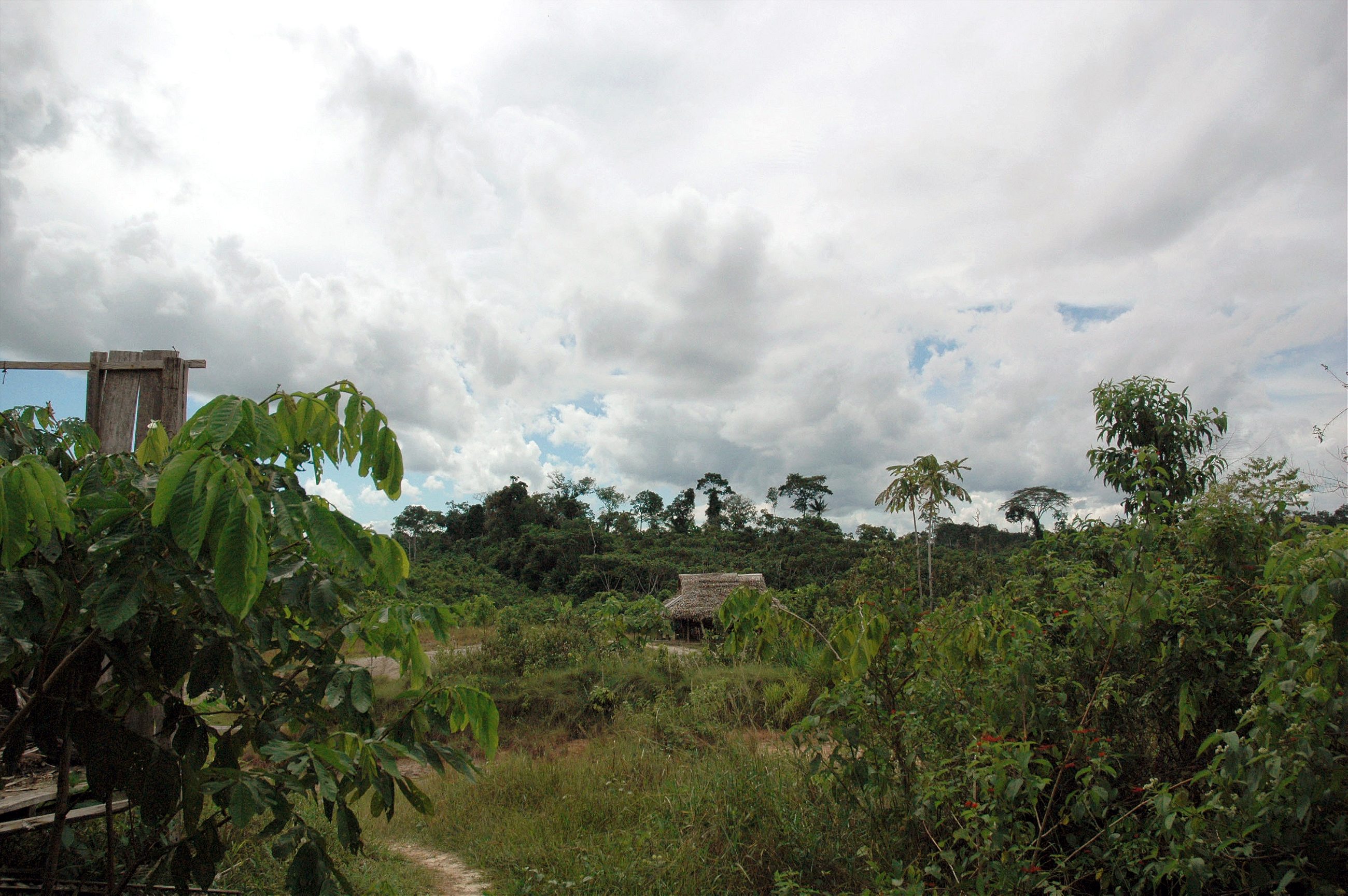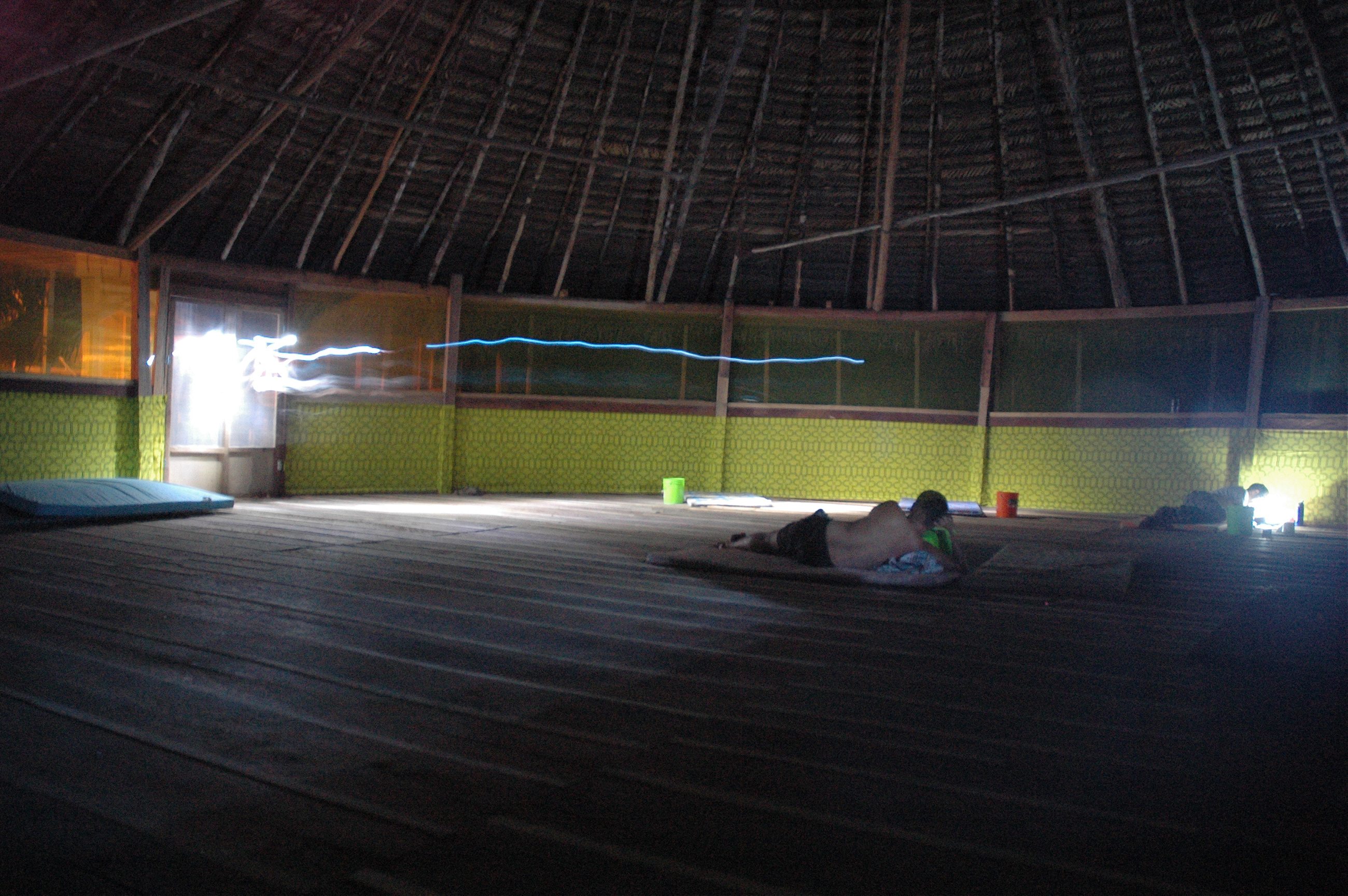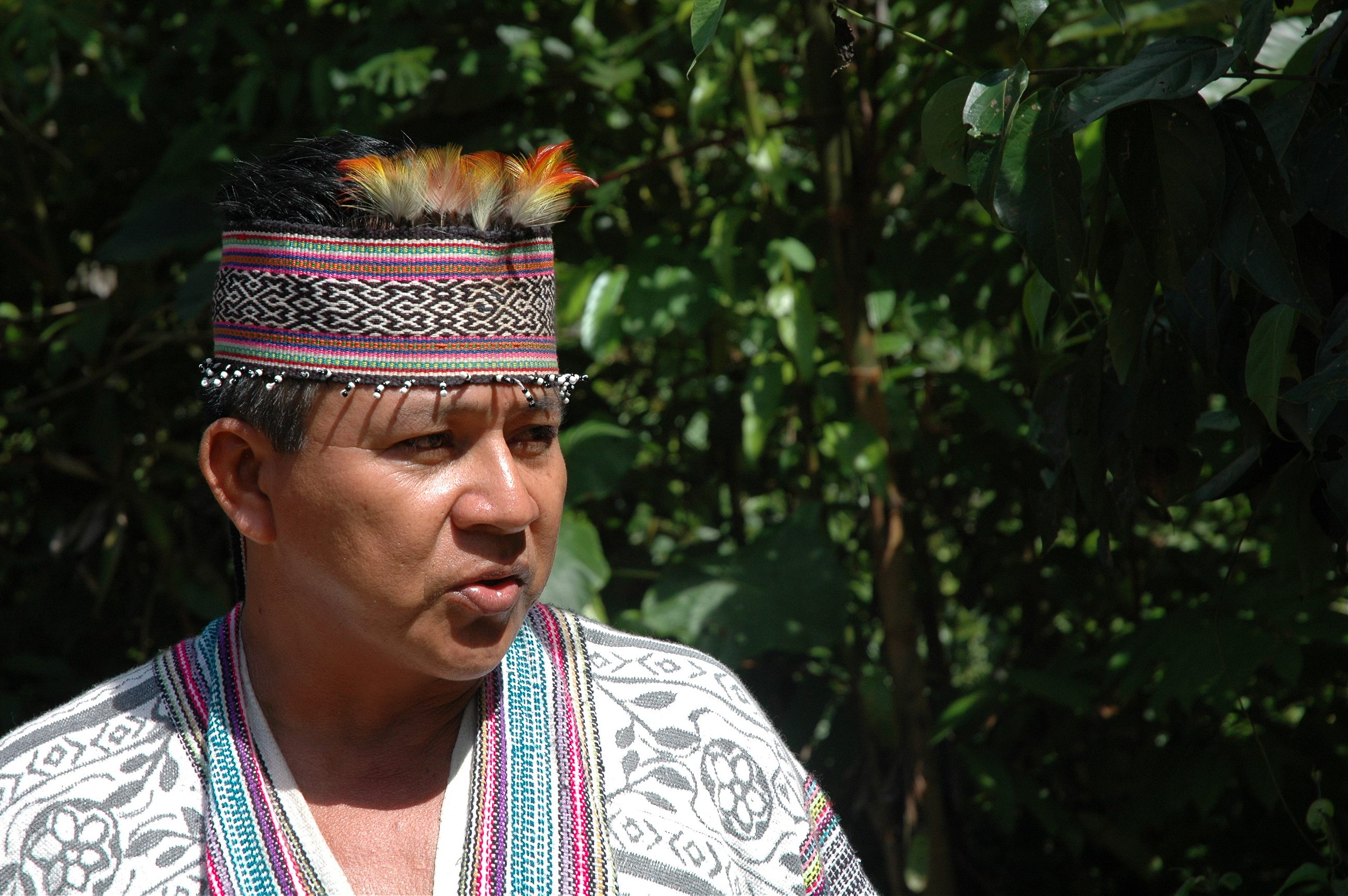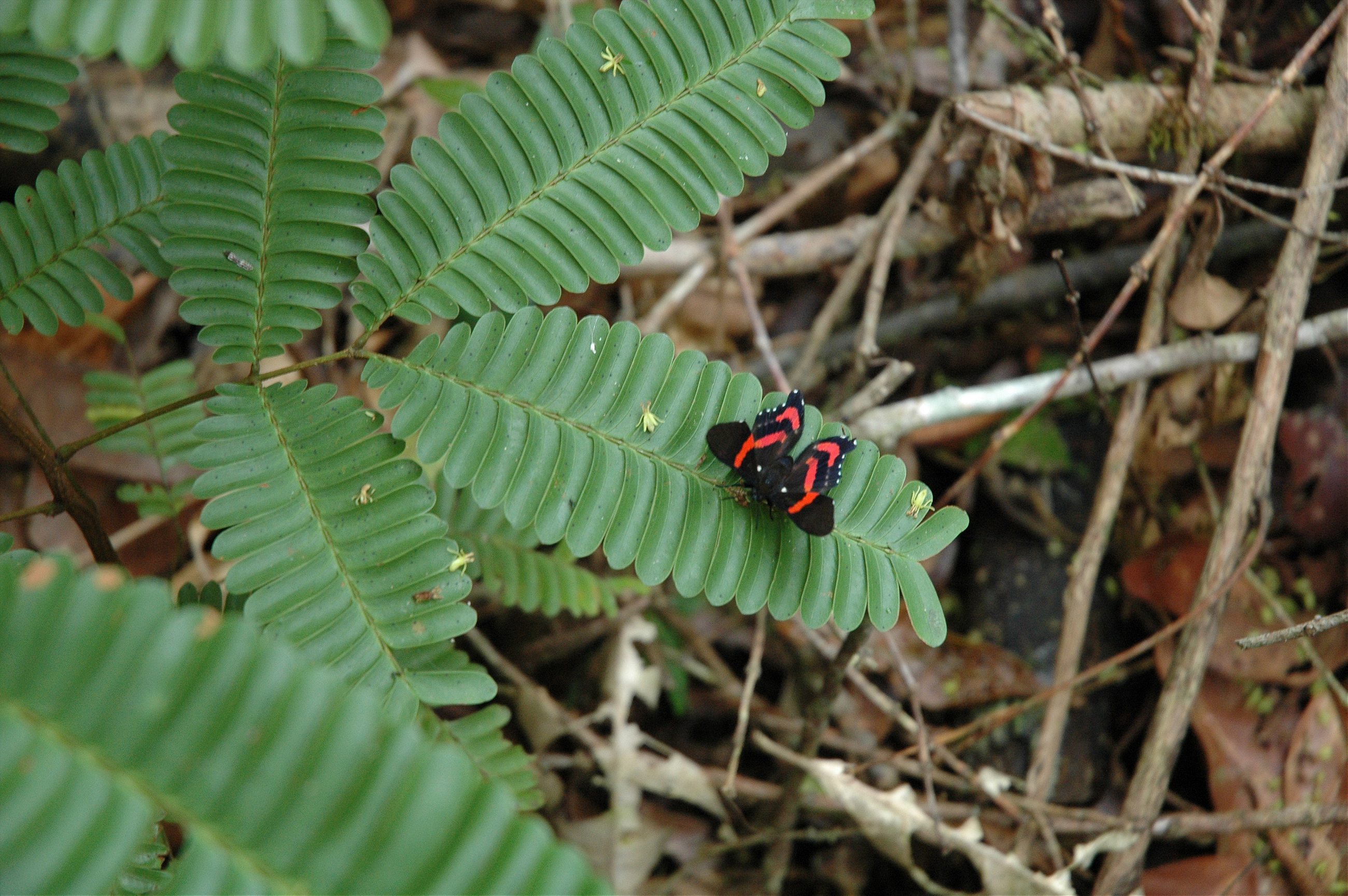Our first installment of Dispatched, a new longform series curated by Anthony Bourdain, from an ayahuasca training center in the Peruvian Amazon.
Halfway through our hour-long Skype call, Carlos Tanner warns me that he is going to “cross over”. He means that our conversation is about to leap from things that make sense in this world—how his new baby is sleeping, how many students are enrolling in his school—into things that only make sense if you are very deep in the world of ayahuasca, a world of spiritual warfare and healing, of bioluminescent trees with fabled powers, of songs that turn into snakes that turn into doctors that turn into smoke and drift back into the jungle.
Tanner, a softspoken man with shortcropped hair and wire rim glasses, does not cross over half-heartedly. He commits. When he wanted to have a child, he tells me, he drank a tea made from the leaves of a tree that glows in the dark and gives off special powers. His wife got pregnant soon afterwards. His personal healing testimony is even more supernatural: when he wanted to cure the gastric maladies that brought him to Peru from Massachusetts 11 years ago, he drank ayahuasca, left his body, shrank himself up and entered through his own mouth to examine his stomach. Once there, he found the cause of his distress: a squid blocking his intestines. He pried the squid loose so it could return to swimming in the “dirty water” of his stomach, and never had those symptoms again. These are the things Tanner speaks of when he crosses over.
There isn’t much magic left in the world today, which might explain the widening appeal of ayahuasca—the plant has made Joe Rogan’s “Scholar List” and apparently changed Sting’s life and saved Lindsay Lohan. But not everyone can come to the Amazon. Some believers think the solution is to bring the plant, and the ceremony, to the rest of the world. Tanner’s Ayahuasca Foundation, in conjunction with a Shipibo medicine man named Don Enrique, is training curanderos from all over the world how to lead ceremonies back home. So let’s talk briefly about things as they are in the real world. And then we too will cross over.

In the real world, Tanner’s Initiation Courses are training a generation of medicinal healers whose work is outlawed in the countries where they will practice. Ayahuasca is a compound of mashed ayahuasca vine (banisteriopsis caapi) boiled together with chacruna leaves (psychotria viridis). This mixture is illegal in most countries because chacruna contains DMT, a powerful psychedelic that occurs naturally in the bark of acacia trees and other plants and is even thought to be produced by the pineal gland in humans. DMT has been widely outlawed since the passage of the 1971 UN Treaty on Psychotropic Substances. It remains a Schedule I drug in the U.S., a Class A drug in the U.K., and classified as an illegal stupèfiant in France.
In the real world, Tanner’s school is a small jungle camp outside of Iquitos called Inkankana, where through much of the year you can find up to a dozen foreigners—from North America, South Africa, Israel, Europe—studying under Don Enrique. The heat is outstanding, and languor rules. The foreigners smoke a heavy local tobacco called mapacho and try to learn the songs of Don Enrique’s ancestors. They might spend some hours drawing kaleidoscopic patterns given to them during visions. They journal thoughtfully in the shade. Every night or every few nights, depending on their fitness for it, they drink ayahuasca in a ceremony. This means four or more hours of lying on a mat in a circular hut in the pitch black with the jungle screaming all around them. Don Enrique sings, blows tobacco smoke on them, and talks gently to them. The foreigners weep profusely, gasp with joy, and suffer diarrhea that sends them into the dark to the outhouses 20 yards away. Once back on their mats, they take over the songs from Don Enrique, because they are learning to lead these types of ceremonies back in their home countries. This singing can either be Shipibo icaros or something extemporaneous—“I am a plant doctor, a real jungle doctor”, one might repeat again and again—or just something they like from back home: Pete Seeger, Queen, whatever. At intervals throughout it all, they vomit. They vomit thunderously, trembling, shouting, into plastic buckets next to each mat. The jungle insects screech at the circular lodge from without, and from within, the foreigners hurl loudly in response.

That is what the world of Inkankana, this plant medicine school run by Tanner’s Ayahuasca Foundation, would look like if I had just been there observing, not participating. Initially, I did not want to participate. I was a 37-year-old cynic who had endured a bad breakup with psychedelics a decade earlier and had two tousle-haired children and a wife I adored and not much reason to split my brain open and let a new universe pour in. But I believed, as Tanner did, that to write about ayahuasca without actually drinking it was to write a review of a movie I didn’t see. Besides, I had my own minor intestinal complaints. If this was a medical school, perhaps I could find my own stomach squid and set it straight.
One last bit of reality before crossing over: I brought a lot of fear to Peru. Fifteen years prior, at the end of a long and delightful chemical summer, which lasted most of my college years—long weekends of smoking opium in dorm rooms at Stanford or shrooming on the Santa Cruz boardwalk—I had a calamitous encounter with psilocybin. One evening my friends and I found a year-old bag of mushrooms and ate them by the fistful, thinking they must have lost potency. They had not. And by the time we were up in the foothills above Stanford campus, it was night, and I had lost my mind. The darkness crowded me, the moon rose clear to the top of the sky in a minute, and I-280 became an alien spaceship landing strip. I slipped and slid down the slope of an old quarry and then I took the oils on my skin for blood that covered every part of me. That was the cognitive door through which terror entered, and stayed, until well into the next day. It broke my relationship with weed, which had been a loyal ally for years as I wrestled Adorno and Heidegger. After that night, marijuana made me feel like I was dying. For years I could barely smell the stuff, or drink even a particularly hoppy beer, without my stomach dropping like I had been pushed out of a window.
So while I didn’t believe in God or in the collective consciousness of plants, I did believe in the power of psychedelics to punish you, to fill your opened heart with your own fears and then abandon you in the dark. And then I spoke with Don Enrique in the hours before the first ayahuasca ceremony, and he told me this: “If you have faith in God,” he said, “the plant can give you knowledge and intelligence. But if you don’t believe in the plant, it can make you crazy. It can kill you.”
Let’s cross over.
The Amazon basin, a billion acres of jungle and river and forest between the eastern slope of the Andes and the Atlantic Ocean, is the center of sentient plant life on earth. The billions of plants there have a collective consciousness, a vast intelligence that was brought to this planet by aliens many thousands of years ago. The concoction of ayahuasca and chacruna leaves—a nearly impossible combination to stumble across in an ecosystem with tens of thousands of plant species—was not discovered by the indigenous people. Rather, the ayahuasca vine told the indigenous people how to make the drink. It was a Promethean act of pity, perhaps, restoring a line of communication to our parents, to our mother, to Mother Ayahuasca, the greatest of all the gods of the plant kingdom.
Don Enrique’s ancestors had been communicating through spirit sessions with mother Ayahuasca for over two thousand years. They drank ayahuasca, and they were given the power of prophesy, telepathy, and healing. This medicine is what Don Enrique is teaching the foreigners. He teaches them icaros, or sacred songs, to supplicate the gods and guide the visions. He tells them how to diet a plant— one must swear off salt, sex, and sugar for up to a year while drinking the tea brewed from a certain plant, or perhaps while smoking a pipe carved from its wood, in order to build a monogamous relationship (plants are jealous creatures). Only then will the plant trust the shaman enough to tell its secrets. Don Enrique has notebooks full of drawings of blowdarts and other tools of both good and bad shamans. He talks to them about black magic, the jealousy of Peruvians, the mortal attacks that bad sorcerers have attempted on his own life and on Tanner’s life. He shows them how animals and ancestors will come into the lodge during the ceremony, sometimes as snakes, sometimes as spirits. He teaches the foreigners to trust their visions, to allow the ayahuasca to take them inside their patients’ bodies and diagnose them. He blows smoke on patients to cleanse them, he explains to the young shamans that the spirits will tell them what plants to choose, in what dosage and combination, in order to heal the patients in the ceremony. In their ceremonies, sometimes Don Enrique and the students team up, and meet in the bodies of patients, like medical residents doing rounds with their attending physician.

I know this because it happened to me. In full sweat and fear, I drank the ayahuasca, and then I laid down. I vomited, I put out my cigarette and had a fake vision, a visitation of a female vine-creature with a neck scarred like a manatee’s back, a facile environmental metaphor that I immediately recognized from my shittier writing habits. I waited and I vomited again and then the sky exploded in bright white light and I felt swamped by deep, limitless love. And with that, the ride was on. I was pulled through the ether and given a look at the menu of what ayahuasca can do for us small-minded humans. I saw the future. I saw, without fear, the violent death of a friend (a death that hasn’t happened yet). I saw my own ancestors, people I have never spared a thought for, line the circular hut and benedict me in warm Yiddish and Dutch and Middle English. I saw a jaguar walk through the room, and when Don Enrique blew smoke on me and sang to me, I surged along with his song and then the vine—the real vine this time—went through me like spiritual endoscopy, and deliberated and diagnosed my gut and the jaguar and a snake had a conversation with Don Enrique about how many leaves of this plant should be mixed with how many leaves of another, and how often I should take the medicine.
I saw these things and believed them, and yet I always knew where the door to the visions was. I felt I could walk back out to reality anytime I wanted. But the anxiety had melted. I feared neither death nor darkness. When I had to get up to go to the outhouse, I practically skipped through the shrieking jungle and high-fived the broad plant leaves that brushed against my face. I turned on the light on my iPhone, not to see, but to shoot video of these beautiful friendly plants as I moved among them. Once back in the lodge, I returned to the visions, tried to test them. I discovered that I had no hate for any part of myself. It was bliss undiluted, and my chest hummed with it, even as the visions tapered down and we turned a lantern on and smoked quietly before turning in for the night.
Footage shot by the author in the middle of an ayahuasca vision.
During an early morning medicinal purge, Don Enrique (left) shows the author (far right) how to vomit like a true shaman.
The next day began just after dawn, with a violent purgative prescribed by Don Enrique, who took the medicine with us. A half-cup of a thick blood-red drink, chased by as much water as we could possibly ingest, scooped from an metal pot in wide plastic pans. And then, with a magical speed and force, came the urge to vomit. This was meant to detoxify, and Don Enrique was a powerful expeller, his focused streams of fizzy white liquid splashing against a felled tree. I was a much more pitiful being, hunched over, half-retching and half-drooling. I was reminded of Tanner’s “dirty water” in his stomach. Neither thing makes biological sense: what could you possibly be ridding yourself of when wringing out an empty stomach? A few tablespoons of bile? This was a mingier plant medicine than ayahuasca, all convulsion and no visions.
We took the rest of the morning easy. Wilma, Don Enrique’s wife and the daughter of a great medicine man herself, painted psychedelic snake patterns on the side of the ceremonial lodge. Some of the students painted flags with similar snake-laced designs and arranged them in a cross, at Don Enrique’s suggestion—Don Enrique is a born-again Christian in addition to a traditional medicine man, and seems deeply pleased at mixing Christ with the leafier gods. Hunters at the camp had shot a majás, a large jungle rodent, on a knoll not far from the camp, and Wilma cooked it for lunch.
There were three students with me at the camp: two South Africans and an American. Since the ceremonies are illegal in their home countries, I’ll just use their initials. K. was from Long Island: a veteran, a systems engineer and a newly-minted MBA who found switching career paths wasn’t enough to answer his questions about life. D. was the youngest, a warm South African who seemed to deeply embrace the health care obligations of ayahuasca. If he hadn’t found his way to Peru, it was easy to see him working in hospice or something similar. The long conversations the students had among themselves revealed a deep frustration with Western medicine. Everybody had a story about a malady misdiagnosed, or a friend or relative who was mistreated in hospitals. When they talked about ayahuasca, the conversation felt intimate, almost gossipy. “Ayahuasca’s not giving me very many visions right now,” said K. He got sympathy from D. “She’s holding out? Yeah, that happens to me to sometimes. It can be frustrating.” If there is one parallel with Western medical students, it would be that they seem a little overmatched by the subject matter. It’s a long path, and they’ve only just begun.
In the case of the other South African, W., it didn’t seem likely that he’ll ever get there.
To explain W., it’s worth looking to William S. Burroughs’ book The Yagé Letters, a collection of missives written to Allen Ginsburg while Burroughs was looking for Yagé (another word for ayahuasca) to help him cure his heroin addiction (and hemorrhoids) not long after he fatally shot his wife in Mexico City. He was not impressed with the shamans he found on his travels. “The most inveterate drunk, liar and loafer in the village is invariably the medicine man,” he wrote. But he was clearly not very close to enlightenment himself. This is the difficulty of finding healers to train: there’s a lot of damage in many who seek out ayahuasca. Sometimes they would seem beyond even the power of the plant. So it was with W., who would spend his weeks at the camp but would head into Iquitos—one of the most dreadful outposts of vice and poverty in all Amazonia—and do cocaine and shag prostitutes all weekend. If ayahuasca was as jealous as Don Enrique said, W. could be due for trouble.
Which, if you cross over with me, is exactly what happened during the second ceremony. W. had angered someone—either Mother Ayahuasca or some malevolent shaman in town—and we all had a price to pay. The chemical compound at the center of the ayahuasca vine’s usefulness, an MAO inhibitor that allows the chacruna’s DMT to get past the brain’s usual defenses, used to be known as telepathine, because of the telepathy the Amazonians said the vine enabled. When all four of us were comparing notes after the second ceremony, we found we had experienced some of that telepathy: the euphoric kaleidoscope of the first night had for all of us been replaced by a ruined, scorched landscape. It wasn’t frightening or even particularly unpleasant, but it felt a lot like a trek through Mordor, with distant bursts of flames where the battle was raging between Don Enrique and dark magic. Don Enrique said this the next morning, that he was exhausted from fighting off W.’s attackers, and that he thought W. needed to get clean before doing another ceremony.

Don Enrique took me through his gardens. His father-in-law was still sending him chacruna and other medicinal plants, but everything had to be flown in, and it was getting expensive. So the ability to plant all of them on the property was crucial to the success of the school. He seemed pleased with the progress.
He pointed out the plants that he was combining for my own concoction for my digestive troubles. The next day, after we had all trekked out the half-hour to the highway and hitchhiked into Iquitos, he gave me the medicine, an elixir made from a tree named Sangre de Grado—Dragon’s Blood—because of its red resin. This he put in a re-used plastic Inca Cola bottle, the unofficial packaging of all plant medicine. Two weeks later, back in my apartment in Manhattan, I was still drinking the last of it, as it fermented wildly and became fizzy with putrescence. I finished the bottle as the jaguar and the snake had first indicated. My symptoms seemed to disappear. Between that and the intense beauty of the visions in the ceremony, I was a convert. Mother Ayahuasca and I would meet again.
But then a funny thing happened. Sometime late in the year that followed, I noticed a lump on my neck. It was a strange observation, like a hallucination almost, to have your body show you something you do not expect. I didn’t know it that first day, but that discovery would fling me for a year into the arms of some of the finest Western medicine available: Beth Israel for surgery, Sloan Kettering for cancer treatment.
I remember having an oddly urgent need to know this from my doctors: how long had the tumors been there? Given the way the cancer, a thankfully slow variant, had already spread from my thyroid to the surrounding lymph nodes, they dated it at least a couple years.
Naturally I asked Tanner about this in our call. Mother Ayahuasca, the great psychospiritual endoscope of the jungle, had been inside my body and yet in all her deliberations with the snake and jaguar, had neglected to tell me I had cancer. How could that be? He answered with the loophole common throughout alternative medicine: if it didn’t work, it must have been because I wasn’t in the right frame of mind. To his credit, he recognized the circularity of that reasoning for would-be patients. “I don’t want to put it on you, but every patient has their own qualities,” he said. “They have their own shit going on. Could it have been diagnosed in one day? Yeah, but I’ve also seen it not happen in three weeks.”
My diagnosis and treatment was a perfect use case for western medicine. They put me under, cut out the cancer, gave me so much radiation that I tripped the Geiger counters at JFK airport, and now the cancer is totally gone. But the experience, rather than souring me on the improbable plant medicine, makes me wish it had been readily available here. My year in cancer treatment was like a drawn-out version of the second ayahuasca ceremony: a long slog through fear and nausea and death-fixation and back out again. But I had none of the other tools that ayahuasca lavishes on you. I knew I was loved—my people stood by me fiercely throughout—but I couldn’t feel the totality of love the way I did on ayahuasca. Early on in the process, on a night when I had 37 biopsies on my neck in one session, alone in an overbright exam room with two harried techs and one very long needle, I wanted very badly to be out of my body and out of my mind. I don’t know what an ayahuasca ceremony in New York would feel like, how it could possibly approach Inkankana. But ayahuasca for me is not about the healing—it didn’t do much of that for me even in the Amazon—but about being ready for what comes next, in life or even death, and about crossing over well, when the time comes.
